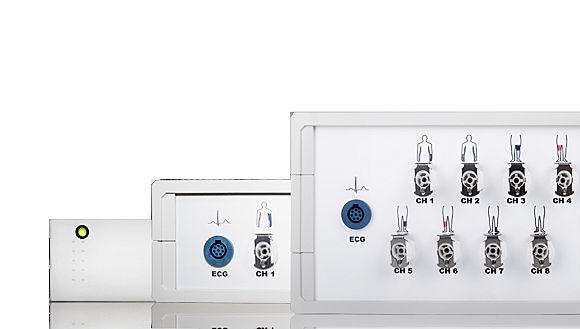
#Product Trends
Why do we use phlebodynamometry?
The phlebodynamometry is especially applied before surgical intervention on the epifascial venous system. It helps with evaluating the insufficiency of the vein-muscle-pump and clarifying the question of how far an improvement of the venous insufficiency is possible. Thereby, it supports the estimation of the prospective therapy success.
The peripheral vein-pressure measurement provides crucial information, particularly at complicated varicoses (clinical CEAP-stages C4-C6) and especially at damages of the deep vein system. Above all, it comes in useful for the differential diagnosis of therapy strategies at pelvic vein occlusions and V.-Saphena-Magna-Varicoses.
In addition, in the field of therapy control, the phlebodynamometry is used to evaluate the process of efficiency of the vein-muscle-pump. As a result, the effectiveness of different therapy treatments like the exeresis of varices, the lysis therapy or also the reconstruction of venous valves can be monitored objectively.²
Indications summarized³:
• Performance test in the epi-, sub- and transfascial vein-system.
• Examination of the operation-indication at the post-thrombotic syndrome.
• Therapy- or process-control after thrombosis treatment.
• Performance test before and after interventions (which turn off the venous function) in the area of the lower extremities.
For the performance of phlebodynamometry-measurements, measuring systems like the AngE PDM from Sonotechnik are suited.
You will find more information about the product on www.sonotechnik.at.
Freely translated from German by Sonotechnik. Please find the original information sources below.
² Kügler, C. (2007). Phlebodynamometrie. In E. G. Knut Kröger, Nicht invasive Diagnostik angiologischer Krankheitsbilder (S. 225,230). Berlin: ABW Wissenschaftsverlag.
³ Gerlach, H. (2006). Phlebodynamometrie. In H. E. Eberhard Rabe, Praktische Phlebologie, Empfehlungen zur differenzierten Diagnostik und Therapie phlebologischer Krankheitsbilder (S. 45). Stuttgart: Georg Thieme Verlag.




